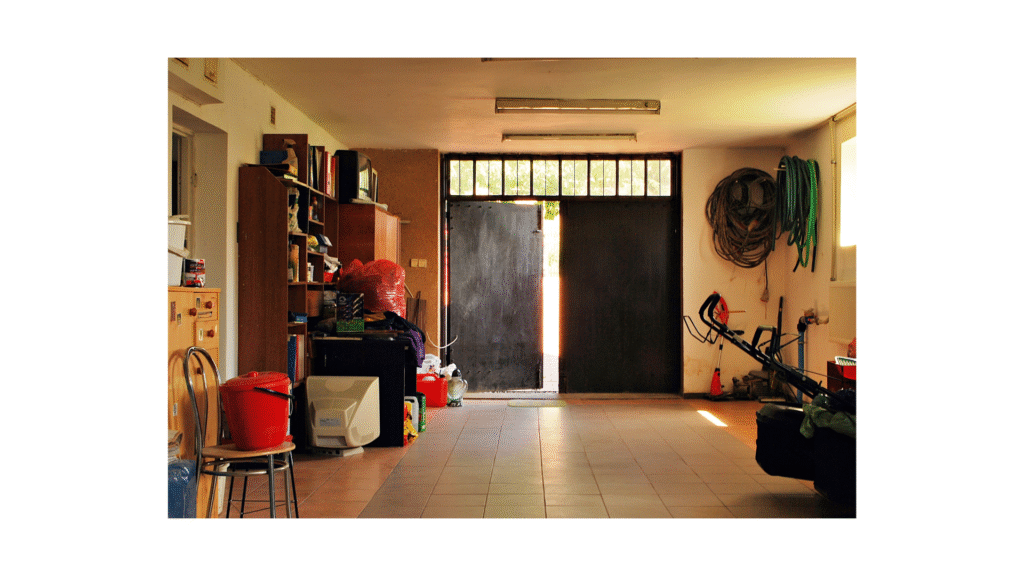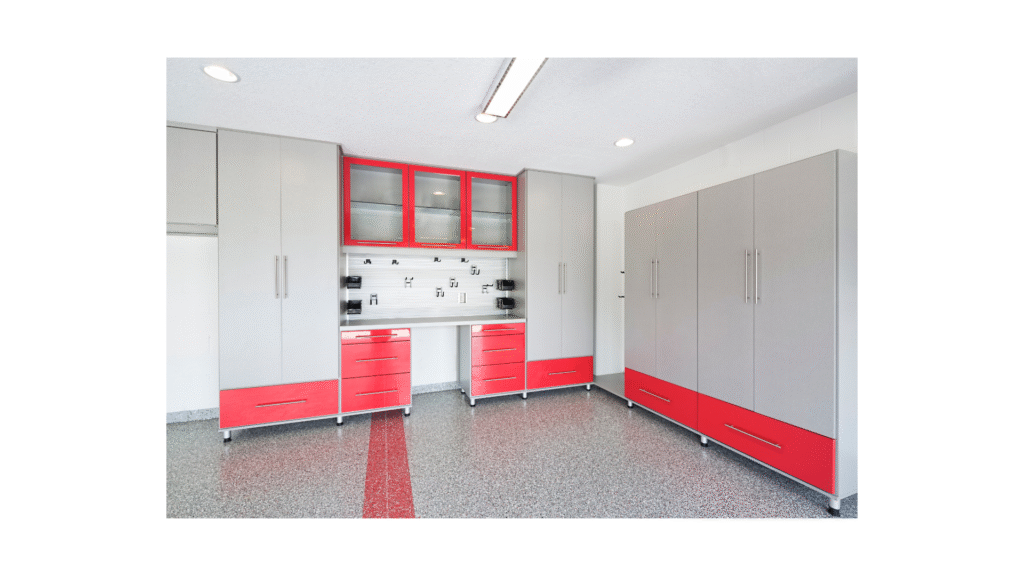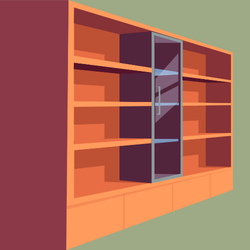Picking cabinets for a humid garage can feel like a real puzzle if you haven’t done it before. Garages are already rough spots for storage, but toss in heavy humidity, and it gets even trickier. Materials can warp, hardware can rust, and musty odors become a headache. I know from experience that the wrong choice means you could waste money and time replacing cabinets sooner than you’d like. To help you avoid the hassle, I’m sharing the scoop on what works, what to skip, and how to set yourself up for long-lasting, low-maintenance storage.

Why Humidity Matters When Choosing Garage Cabinets
Humidity is pretty relentless when it comes to garage storage. Most garages don’t get the same heating or cooling as the rest of the house. This leaves them exposed to major swings in moisture, especially in the summer or in coastal or southern climates. If you’re storing important tools, outdoor gear, or holiday stuff, the last thing you want is for everything to get damp, moldy, or rusty.
Cabinets made for indoor use just aren’t built to take those conditions. When humidity climbs, certain cabinet materials swell, hardware gets sticky, and doors could even stop closing the way they should. Picking the best materials and designs is super important for both durability and protecting your stuff.
Main Cabinet Materials for Humid Garages (And How They Hold Up)
Walking down any big box store aisle, you’ll see a mix of wood, metal, plastic, and sometimes even stainless steel cabinets. Each has its pros and cons, especially in wet climates. Here’s a quick comparison of the most popular ones with real-world garage use in mind:
- Powdercoated Steel: This stuff is super tough. It resists rust, dents, and warping when sealed well. Powder coating provides a barrier that really helps with humidity. I’ve found these stay looking sharp for years, even when the air feels like a sauna. Just keep an eye out for scratches. Exposed metal will rust.
- Stainless Steel: An upgrade from regular steel, stainless is a great call if your garage tends to get really wet or you live near the coast. It’s pricey but very tough and naturally rust-resistant. Plus, it cleans up nicely after those particularly messy projects.
- Plastic/Resin: If your budget is tight, you’ll like that plastic cabinets don’t rust or swell. Many modern resin cabinets look more stylish than expected and shrug off dampness. They’re light and easy to move, but sometimes the shelves aren’t strong enough for seriously heavy items.
- Laminate or Particleboard: I typically stay away from these for humid garages. Even with “moisture resistant” labels, the inner wood fibers almost always absorb moisture over time, leading to puffy, warped shelves, bubbling finishes, and even mildew. Try to avoid them unless the humidity in your garage dips below 50% for most of the year.
- Plywood (With Proper Sealant): If you’re handy or prefer a DIY route, constructing cabinets from high-quality exterior grade plywood and then painting or sealing every edge (even inside joints) can work. Just know it needs serious attention to sealing, and you’ll want to recoat it every so often.
Key Features to Look For in Humid Garage Cabinets

After picking the right material, there are a few practical features that make cabinets work way better in challenging, damp spaces:
- Offthefloor Construction: Cabinets with legs, wallmount styles, or raised bases help avoid puddle damage, water runoff, or accidental spills creeping up into the structure. That gap also lets air move underneath, which keeps the cabinet drier.
- TightSealing Doors and Drawers: Humidity invites bugs, mold, and dust, so doors and drawers that close snug cut down on problems. Some even come with rubber gaskets, which are handy for extra moisture protection.
- RustResistant Fasteners and Hardware: Those handles, hinges, and anchoring screws are often where rust creeps in first. Look for ones labeled galvanized, stainless, or at least coated for anti-corrosion.
- Ventilation: Louvered panels or builtin vents keep air circulating, which helps to keep everything dry and smelling fresh. Closed cabinets without airflow trap moisture, leading to musty odors or even mildew.
- Adjustable Shelves: Humid garages sometimes need deep cleaning or changes in shelf height, especially if you change what you’re storing season to season. Cabinets that make it flexible are easier to live with down the line.
Installation Tips for Humid Garages: Get It Right from the Start

Just as important as the materials and style is where and how you put your cabinets up. Humid garages need airflow and some prevention strategy so you don’t end up wrestling with warped doors or stubborn mold later. Here are some tips to make installation smoother and more longlasting:
- Avoid Placing Cabinets in Contact with Bare Concrete Walls: Concrete soaks up moisture and can keep the backs of cabinets damp. Place a vapor barrier (plastic sheeting) behind cabinets or choose wallmounts with spacers to keep airflow between the wall and your storage.
- Seal Any Wall Holes or Gaps: Garage critters love cozy cabinet corners, so caulk around cabinet edges and check for foundation gaps before you install.
- Use Stackable and Modular Units When Possible: Modular cabinets are easier to move and clean around, and you can quickly replace damaged units without tearing everything out.
- Put Desiccants or Dehumidifiers to Work: Little silica packs or small rechargeable dehumidifiers inside the cabinets keep contents from getting musty and help prevent panel swelling.
Extra Hacks for Keeping Stuff Dry and Secure
I’ve found these tricks really helpful for longterm organization and less cleanup later:
- Add liner paper or plastic shelf liners for easy cleaning and a barrier from spills.
- Skip cardboard boxes for storage. Instead, use sealed plastic bins inside cabinets for double moisture control.
- If you use cabinets for tools, get ones with lockable compartments. Humid air speeds up corrosion, and a lockable door keeps both air and sticky hands away.
Common Challenges and How to Handle Them
- Stubborn Moisture and Odors: If your garage stays damp, consider adding a small rechargeable dehumidifier inside tall cabinets or using baking soda in open trays to absorb those tough odors.
- RustProne Hardware: Wipe down metal hinges or handles every couple of months and hit them with a little spray of lubricant or anticorrosion spray. This really stretches out their lifespan.
- Warped Doors or Shelves: If you notice slight warping on the edges, prop doors open temporarily with blocks or install magnetic catches to pull them back to square while things dry out.
Powdercoated Steel

Powdercoated steel remains one of my top recommendations for a reason. It brushes off splashes, resists fingerprints, and even if you accidentally hit it with a power washer, it won’t peel like cheap paint. Just be careful about where you store your snow shovels; deep nicks can expose bare metal to rust.
Plastic and Resin Cabinets
These come in all forms, from chunky standalone units to tall, closetlike configurations. Go for ones with reinforced hinges and sturdy shelves if you do heavyduty storage. Some pricier models even mimic metal finishes or have sporty latches that last through years of use.
DIY Plywood Cabinets
If you enjoy building things, exteriorgrade plywood, sealed inside and out, can be a real moneysaver. Don’t skimp on caulking seams and repainting after a few years. Some maintenance means they’ll last just as long as storebought options if not longer.
Real Life Example: My Humid Garage Cabinet Fix
After moving to a home near the coast, I battled constant condensation in my garage. My first set of basic wooden cabinets fizzled out. Doors warped, paint bubbled, and screws rusted within two summers. I replaced them with powdercoated steel cabinets lifted onto fourinch legs and added louvered doors. I also stored only sealed containers inside. Nearly five years later, they still open and close easily with zero rust, and everything smells as clean as the day I packed it away. Tweaks like these save big headaches and extra spending over time. It’s a good reminder that the right setup pays off for years.
FAQs about Cabinets for Humid Garages

What’s the best material for garage cabinets in a humid climate?
Powdercoated steel and stainless steel both handle high moisture well, but heavyduty plastic or resin can also be a smart buy for the budgetconscious.
Can I use regular indoor cabinets in my garage?
It’s risky. Most indoor cabinets can’t take heavy humidity and end up swelling, warping, or getting moldy pretty quickly. Always look for cabinets labeled for garage or outdoor use.
How can I protect what’s inside the cabinet from getting damp?
Use plastic storage bins with tight lids, desiccant packs, and keep doors closed tight. Regularly check for leaks or musty smells so you can handle small problems before they wreck your stuff.
Are wallmounted or floor cabinets better?
Wallmounted options avoid puddles and keep cabinets off damp ground, but both styles work as long as there’s airflow and you avoid contact with bare concrete.
Making Garage Storage Work, Rain or Shine
Getting garage cabinets that shrug off humidity doesn’t have to be complicated. Picking the right material, looking for raised construction, and giving cabinets some room for airflow are all super important for a setup that stands up to wet seasons and sticky summers. Smart planning means more time using your garage and less time fixing storage disasters. Wrapping up: with just a little research and a few careful tweaks, you can put together a storage system that’s built to last—even in the toughest humidity. The next time you step into your garage, you’ll know your gear, tools, and holiday supplies are safe and dry, no matter what the weather throws your way.

Happiness is finding the right tool, right when you need it!
